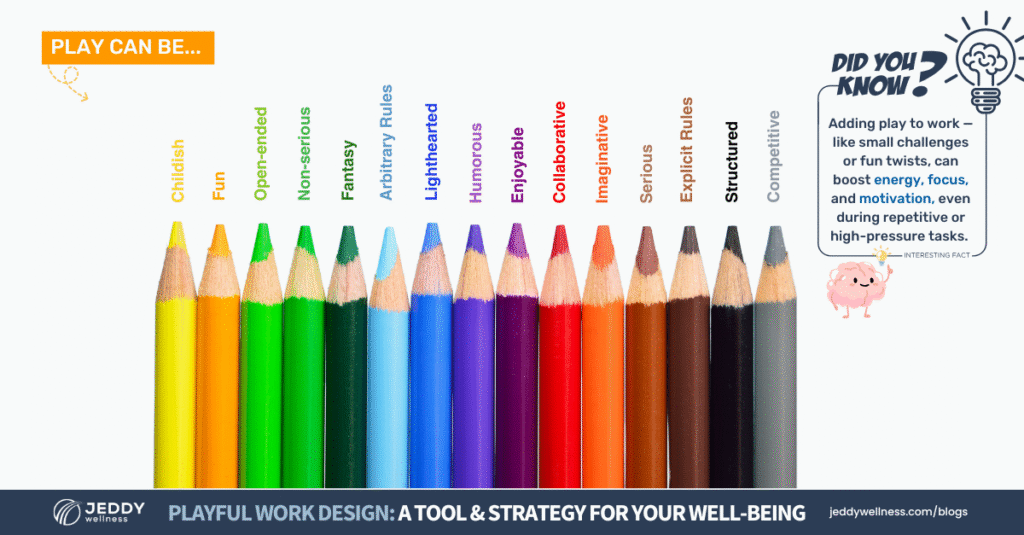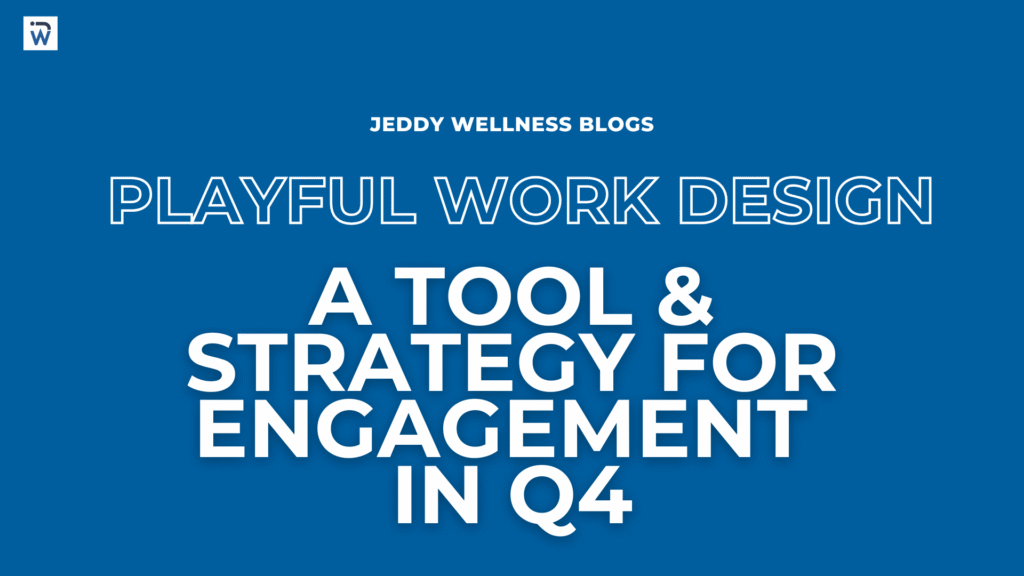Deadlines are piling up, energy dips, and motivation can wane. Many of us are pushing extra hard to hit year-end targets or earn bonuses. This high-pressure period can drain resources, and when resources run low, employees risk a loss spiral: lower energy, reduced engagement, and even burnout. (Want to know which burnout profile could be yours? Find out here.)
One way to maintain engagement, focus, and well-being and avoid the loss spiral is Playful Work Design (PWD). By intentionally making work more enjoyable or stimulating, without changing core tasks, employees can replenish energy, stay motivated, and perform at their best even during high-demand periods.
What Is Playful Work Design (PWD)?
PWD is about redesigning your experience of work. You can:
- Design Fun – Add moments of enjoyment, humour, or creativity.
- Design Competition – Set personal challenges to make tasks more stimulating.
Think of it as turning work into a game for yourself , whether it’s beating yesterday’s numbers, reframing a repetitive task, or adding a playful twist to meetings. Research shows that playful work:
- Boosts energy and engagement
- Helps employees stay motivated even in repetitive or stressful work
- Improves focus, creativity, and performance
Play Spectrum
Play comes in many shapes and sizes. Some moments are silly and spontaneous, while others are structured and competitive. Imagine it like a box of colored pencils – each style of play is a different color. The more colors you use, the more vibrant and engaging your work becomes.

Like most things in life, llay isn’t one-size-fits-all. Mixing lighthearted fun with structured challenges lets everyone, introverts and extroverts alike, find their own way to engage, experiment, and stay energized.
Tools vs Strategies
Tools are specific activities or practices you use to engage employees, like gamified checklists, mini-team challenges, or micro-break exercises.
Strategies are overarching approaches that guide how and why you use tools, for example, encouraging autonomy or fostering friendly competition.
PWD blends both – it’s a strategy for intentionally shaping your work experience, using tools like games or challenges to make it actionable.
(I spoke about tools vs strategies on Workplace Wellness Hour)
Playful Work Design Across IGLO
👉For You (Individuals)
- Tool: Track personal progress with small daily challenges, like finishing a task 10% faster or adding a creative twist.
- Strategy: Reframe repetitive tasks as opportunities for growth or experimentation.
Example: Instead of seeing weekly spreadsheet updates as boring, experiment with faster ways to organize data.
👉For Teams (Groups)
- Tool: Optional mini-competitions or themed challenges.
- Strategy: Encourage psychological safety so everyone can participate comfortably.
Tip: Make activities optional and low-stakes to include introverts and neurodivergent team members.
👉For Leaders (and Managers)
- Tool: Start meetings with short, playful icebreakers or quizzes.
- Strategy: Model playful work strategically, show that fun is allowed but not forced.
-
Leaders set the tone. For example, a manager might occasionally gamify a task, share a lighthearted challenge, or invite team members to experiment with new ways of working, but participation is optional. By modelling playful behaviour strategically, leaders signal that it’s okay to enjoy work, while respecting personal preferences and energy levels.
-
 For Organizations
For Organizations
- Tool: Use gamified dashboards, company-wide contests, or creative recognition programs.
- Strategy: Embed a culture of playful experimentation where employees feel safe to innovate and take initiative.
- Example: Occasionally gamify a task or share a lighthearted challenge, such as at your next AGM or Town Hall. Participation is optional.
Final Thoughts
Q4 can feel intense, with high demands, deadlines, and the push to finish strong. Playful Work Design offers a practical way to maintain energy, engagement, and focus during this high-pressure period. By blending strategy and tools, employees and leaders alike can make work more enjoyable, stimulating, and meaningful, without adding extra tasks or forcing participation.
The key is intentionality: play is allowed, not mandatory.
This October, as the year winds down and the pressure ramps up, consider how you can introduce a bit of playful strategy into your work. It might just be the boost you need to finish the year energized, engaged, and motivated.
Written By: Sumana Jeddy
______________________________
Stay Connected with Jeddy Wellness
Discover evidence-based research and innovative strategies to build and activate healthier workplaces.


